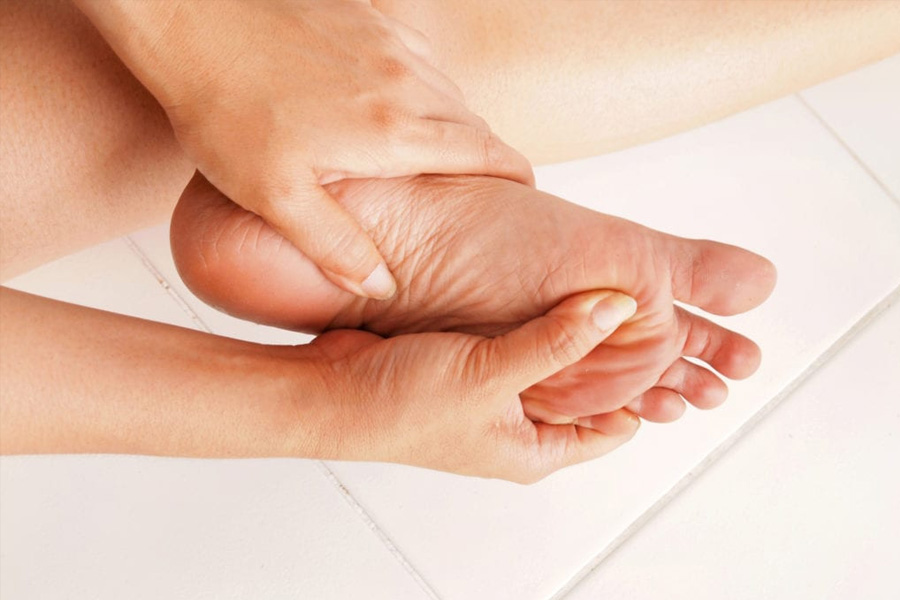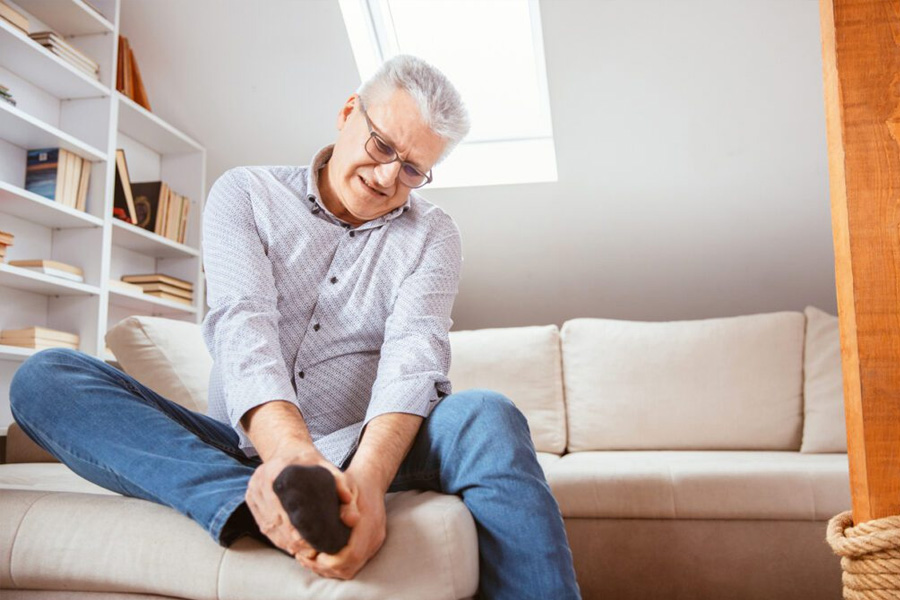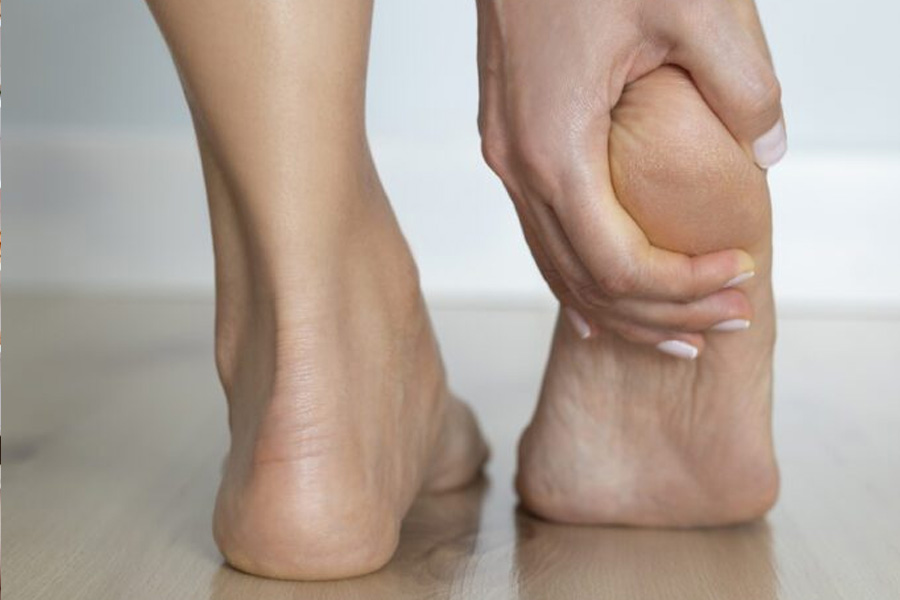Posterior heel pain refers to pain experienced at the back of the heel, not under the heel as is typical of heel pain. Achilles tendonitis, bursitis, and Haglund’s deformity are common causes of posterior heel pain.
Nonsurgical treatments can usually work very well in addressing posterior heel pain. Let’s talk about the causes of this kind of pain, the treatments that can be done to help reduce or eliminate this pain in your heel, and where you can go here in the Cincinnati area for a professional evaluation and treatment of your foot pain.
What Causes Pain Behind the Heel?
Different conditions and injuries can lead to posterior heel pain, but the most common conditions include:
Achilles Tendonitis
Achilles tendonitis is an overuse injury that is characterized by inflammation of the Achilles tendon – the strong band of tissue that attaches the calf muscle to the heel bone in the back of the lower leg. This is a common injury that can develop in runners and as we get older, and it may also be due to a sudden increase in exercise, tight calf muscles, or repetitive stress. Symptoms include pain, tenderness, and stiffness above the heel in the back of the lower leg.
Bursitis
Bursitis is inflammation of the small, fluid-filled sacs called bursae which help to cushion the bones, tendons, and muscles in and around a joint. Heel bursitis affects the bursa which is located where the Achilles tendon attaches to the heel bone. It can cause pain, swelling, and stiffness, particularly when moving the ankle. Heel bursitis can result from repetitive-motion injuries, tight shoes, shoes that rub the back of the heel, or abnormal foot mechanics.
Haglund’s Deformity
Haglund’s deformity is a bony enlargement at the back of the heel that may cause pain, swelling, and redness in the heel. It can cause irritation to the soft tissues near the Achilles tendon when the bony bump rubs against shoes; it can also lead to bursitis. A tight Achilles tendon, high-arched feet, gait problems, and footwear that puts excess pressure on the heel can all increase your chances of developing the condition.
Nonsurgical Treatments for Heel Pain
When any of the conditions listed above cause posterior heel pain, it often responds well to non-surgical treatments such as the following:
Rest and Activity Restriction
Resting and putting less pressure than usual on your feet and legs can help to reduce your posterior heel pain. It is best to avoid high-impact exercise such as running and jogging in order to lessen this pain. Switch to lower-impact activities such as cycling or swimming.
Ice Therapy
Ice therapy, such as using cold packs on the area, can help to reduce inflammation and pain in the heel. To accomplish this, apply the ice pack to the back of the heel area for about 20 minutes every two hours as possible throughout the day. The ice pack or cold pack should be wrapped in a towel or cloth to protect your skin from frostbite (ice burn).
Orthotics
Orthotics are specially designed shoe or heel inserts that can help to support the feet correctly, correct any misalignments, and reduce the amount of force exerted on the Achilles tendon. Custom orthotics can help to relieve symptoms of heel, foot, ankle, leg, or back pain.
Shockwave Therapy
Shockwave therapy is a non-invasive, physician-administered procedure that can alleviate heel pain. It utilizes an acoustic energy-wave technology that works to enhance blood circulation, stimulate metabolism, and accelerate the healing process.
Heel Pain Treatment in Cincinnati, Ohio
If you have chronic posterior heel pain, visit the experienced podiatrists at Cincinnati Foot & Ankle Care. Our doctors can give you an efficient medical evaluation and treatment that works to quell your heel pain once and for all.
If you would like more information or to schedule an appointment, contact our friendly staff today by calling us at our location near you or by filling out our online form now. We look forward to serving you!





